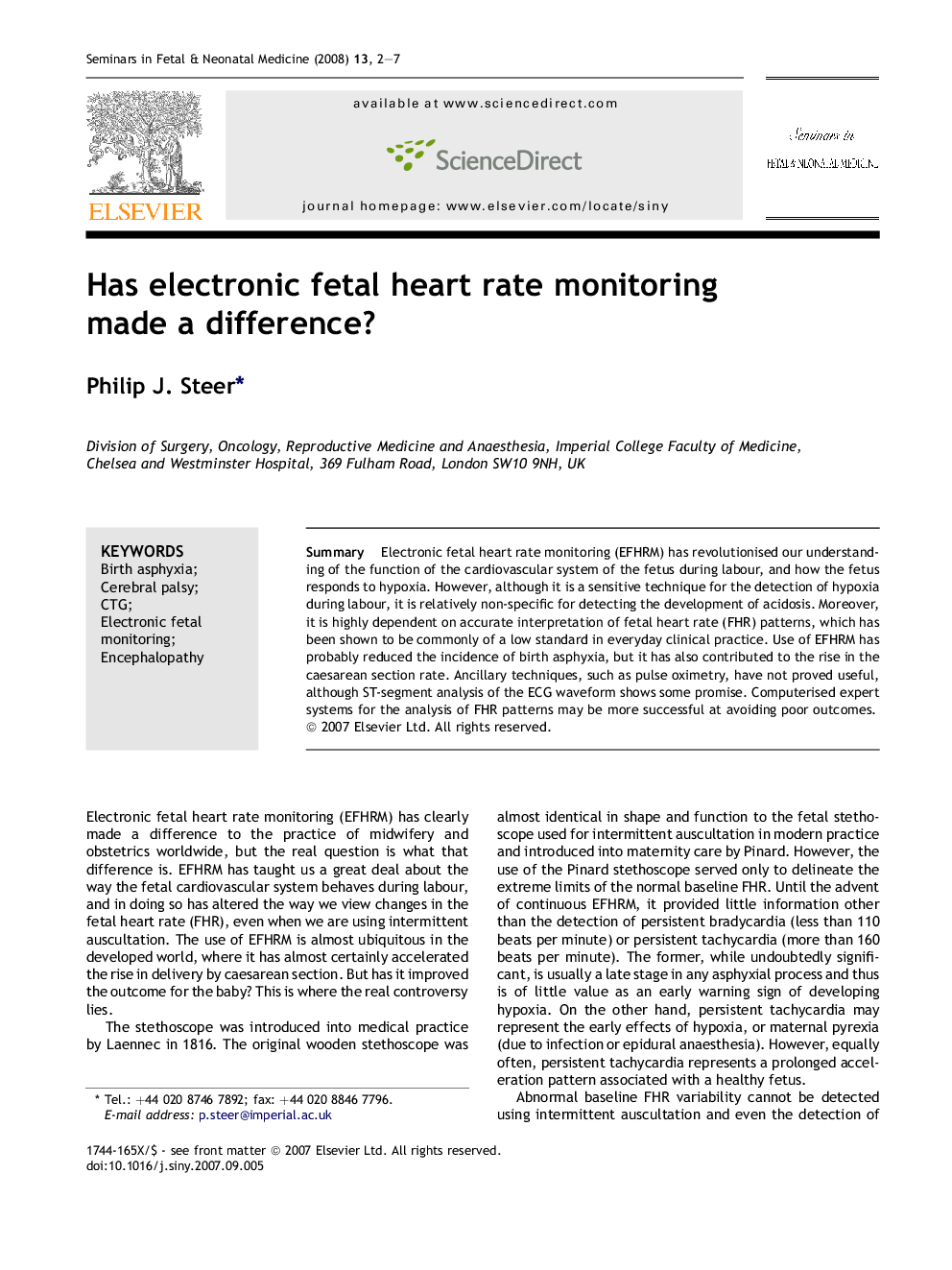| Article ID | Journal | Published Year | Pages | File Type |
|---|---|---|---|---|
| 3974455 | Seminars in Fetal and Neonatal Medicine | 2008 | 6 Pages |
SummaryElectronic fetal heart rate monitoring (EFHRM) has revolutionised our understanding of the function of the cardiovascular system of the fetus during labour, and how the fetus responds to hypoxia. However, although it is a sensitive technique for the detection of hypoxia during labour, it is relatively non-specific for detecting the development of acidosis. Moreover, it is highly dependent on accurate interpretation of fetal heart rate (FHR) patterns, which has been shown to be commonly of a low standard in everyday clinical practice. Use of EFHRM has probably reduced the incidence of birth asphyxia, but it has also contributed to the rise in the caesarean section rate. Ancillary techniques, such as pulse oximetry, have not proved useful, although ST-segment analysis of the ECG waveform shows some promise. Computerised expert systems for the analysis of FHR patterns may be more successful at avoiding poor outcomes.
